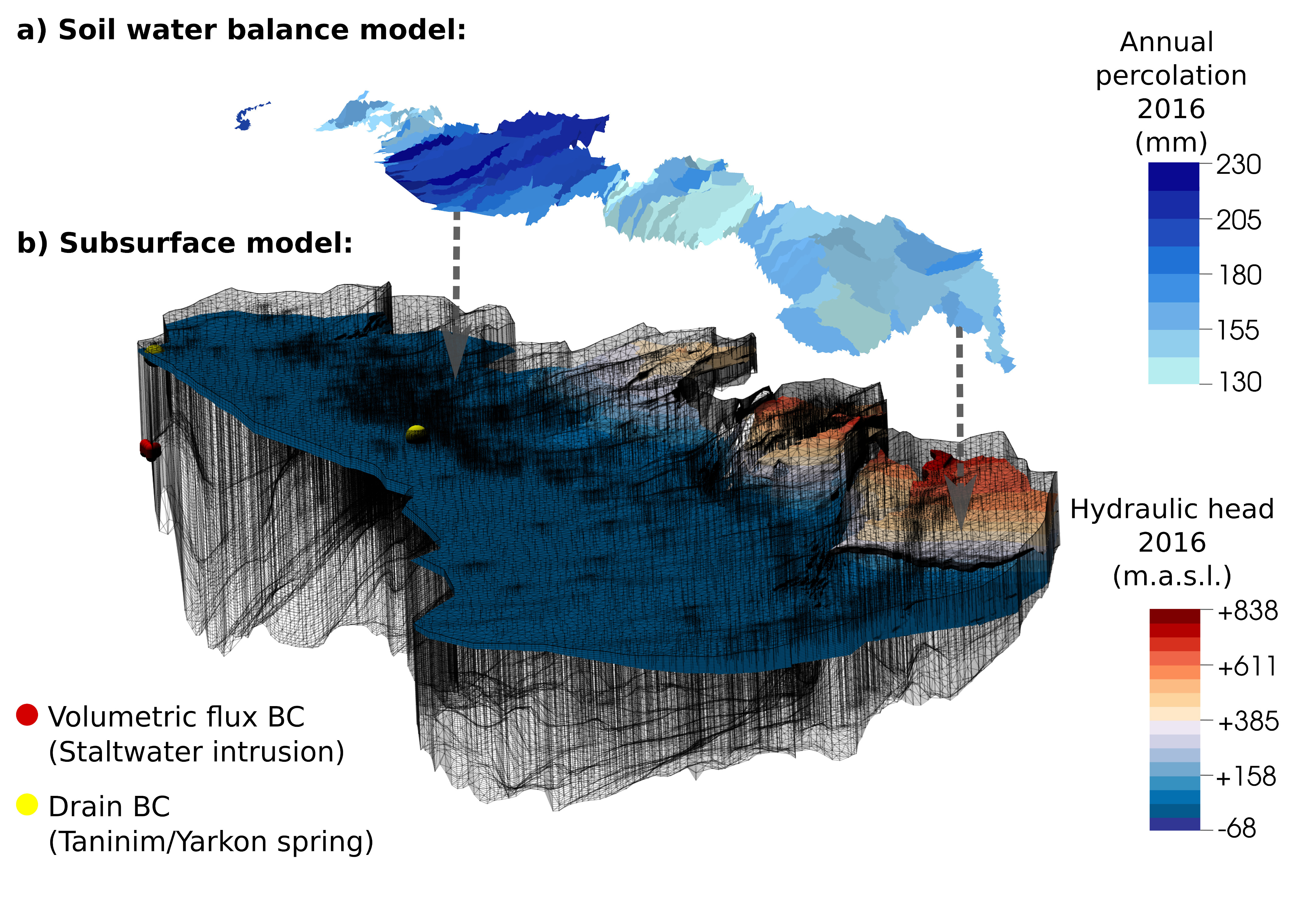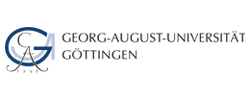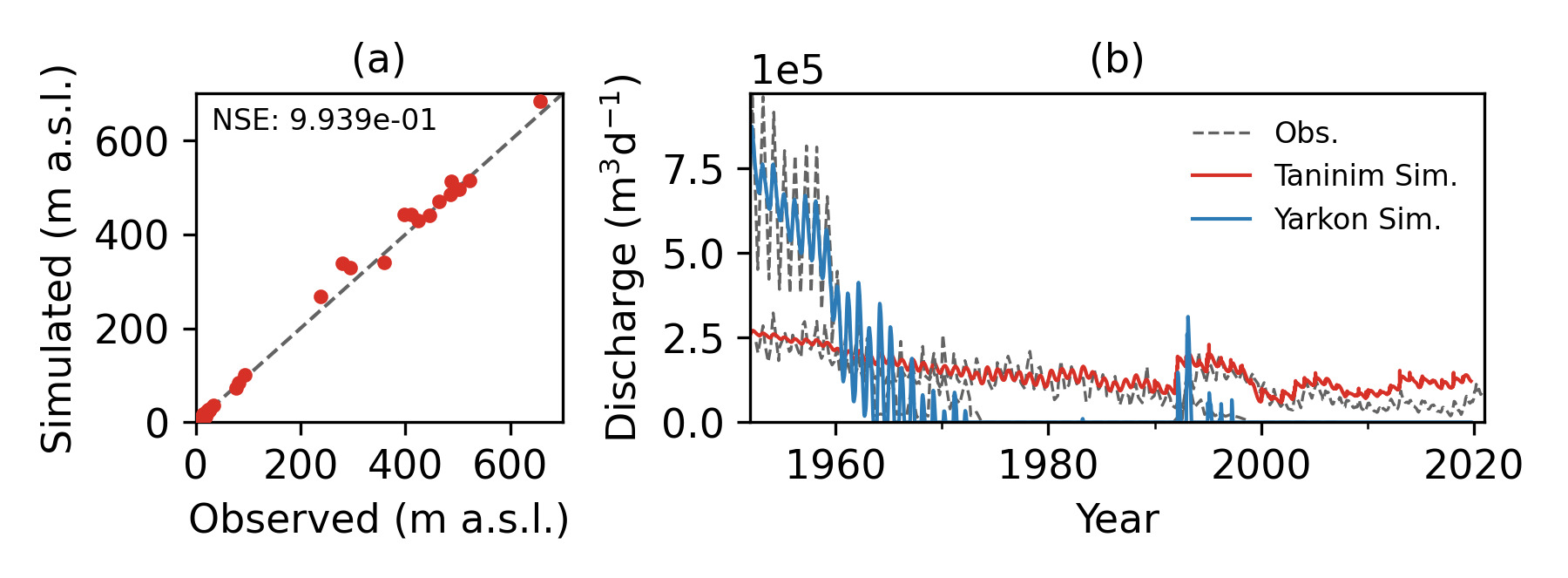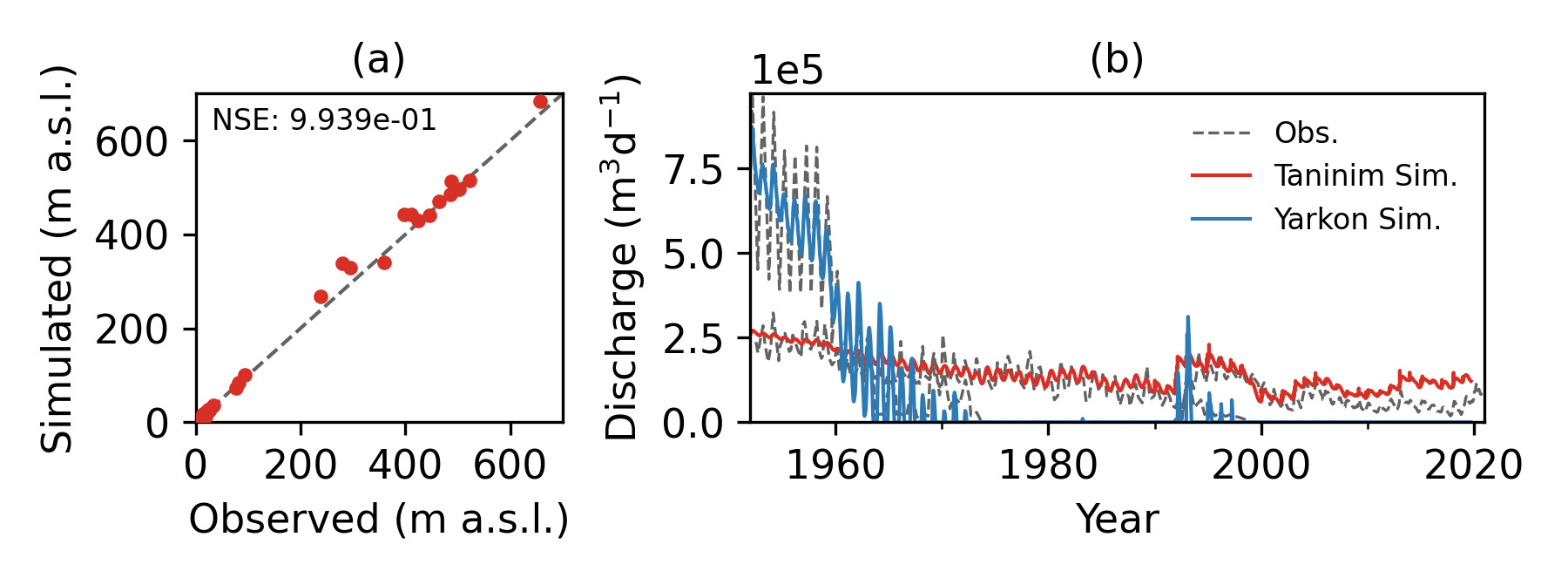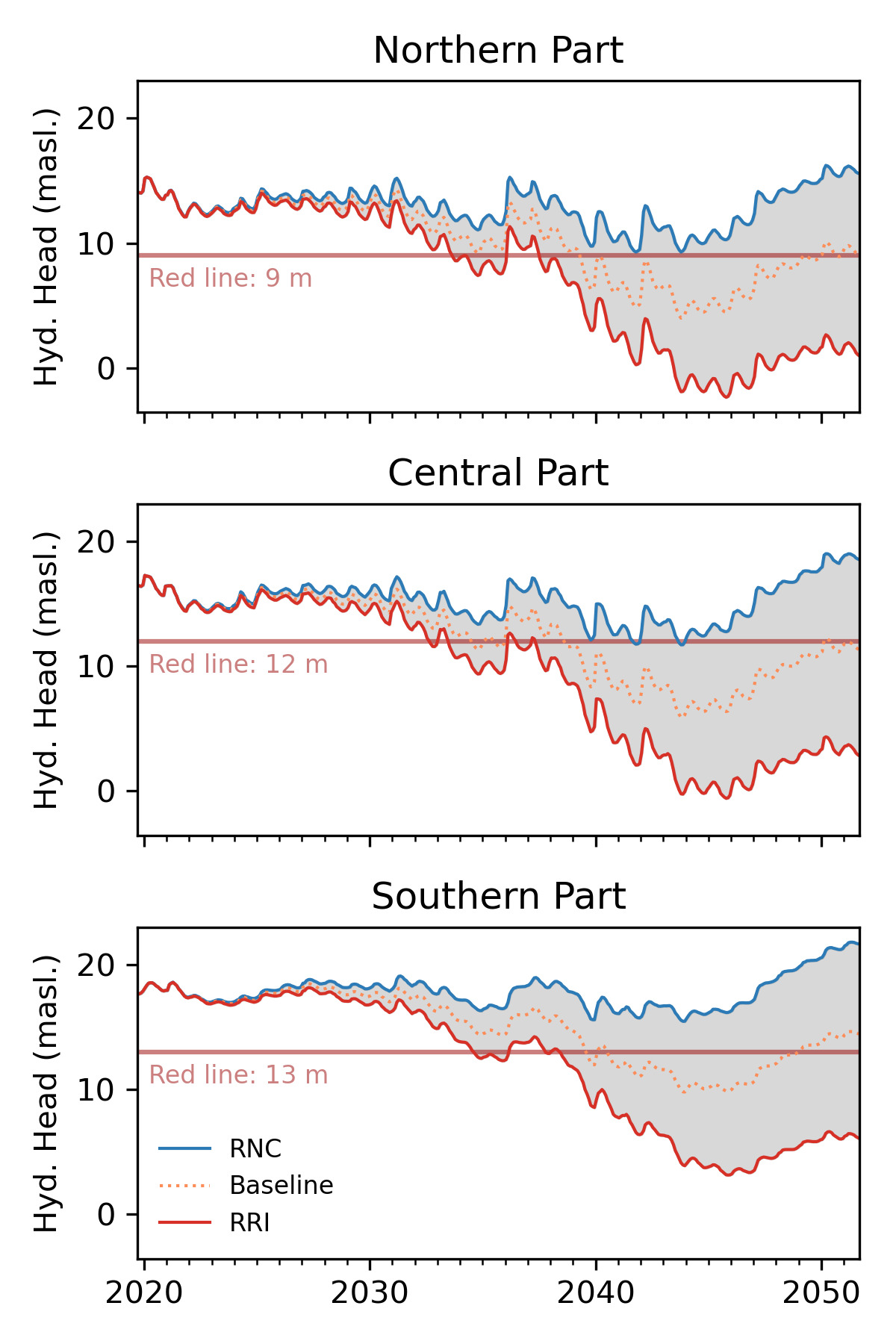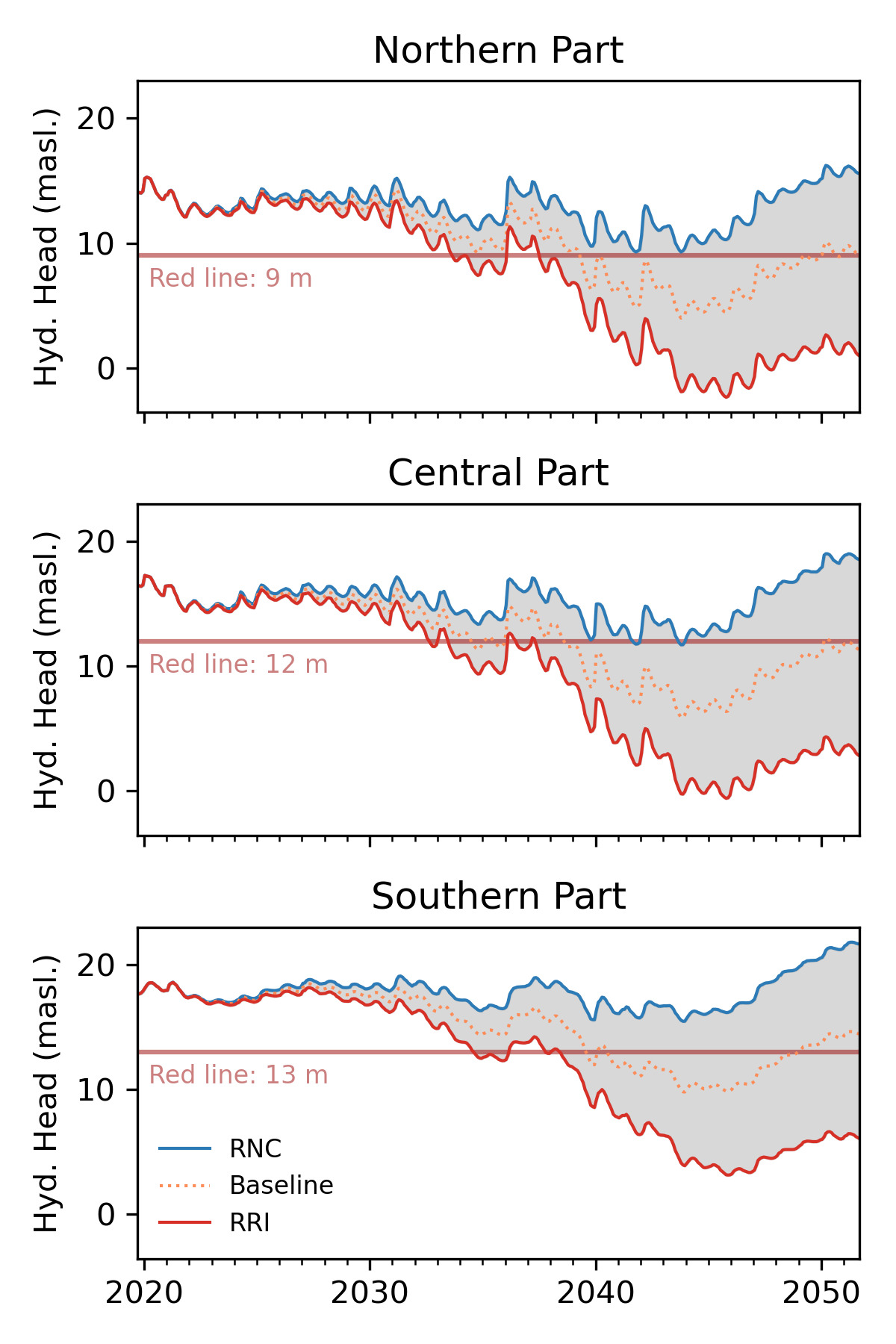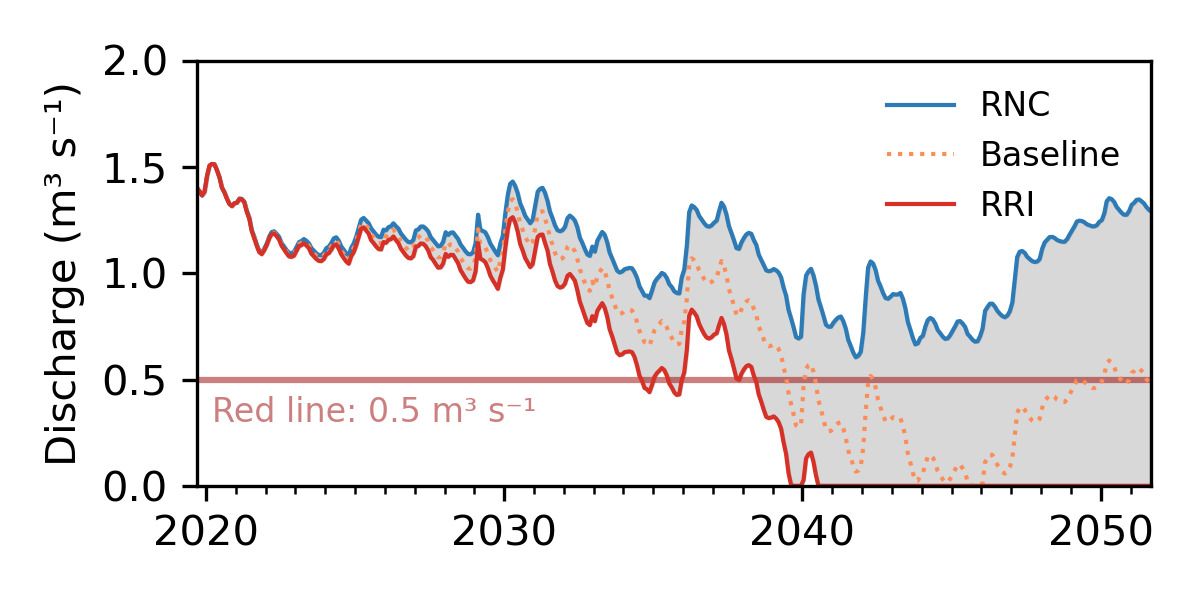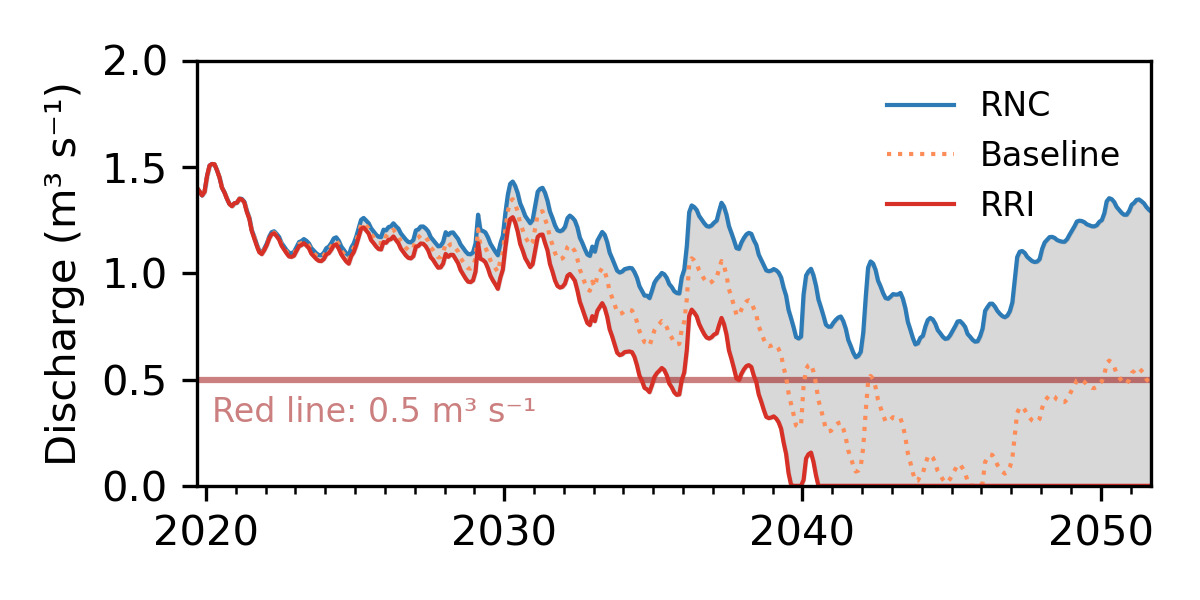The developed numerical model of the Western Mountain Aquifer makes it possible to record the infiltration and groundwater movement under changed climatic conditions in a process-based manner. This enables the adaptation of management strategies to climatic conditions.
The numerical groundwater model has clear advantages over existing models in terms of the level of detail of the modelled processes and the spatial information density. In this way, it significantly increases the ability to predict the spatial-temporal distribution of the groundwater flow. Existing models of the Western Mountain Aquifer in Israel and the West Bank are based on spatially and temporally aggregated calculations of the new groundwater formation (in monthly and seasonal steps) and neglect the highly non-linear dynamics of the infiltration. This is described in our model with a method that includes the slow, diffuse and the fast, focused neoplasm component. The storage and delay effect of the unsaturated zone, which is several hundred meters thick, is taken into account by applying the double continuum model. It allows the integration of the near-surface groundwater recharge in daily resolution and the calculation of the infiltration over the matrix and karst tube continuum.
The process-based, distributive simulation of new formation events enables local authorities to carry out a large number of additional studies in order to develop management strategies adapted to climate change. Predictive model studies allow, for example, the optimal location determination for groundwater recharge (“Managed Aquifer Recharge”) and the recording of the storage capacity of the aquifer.

